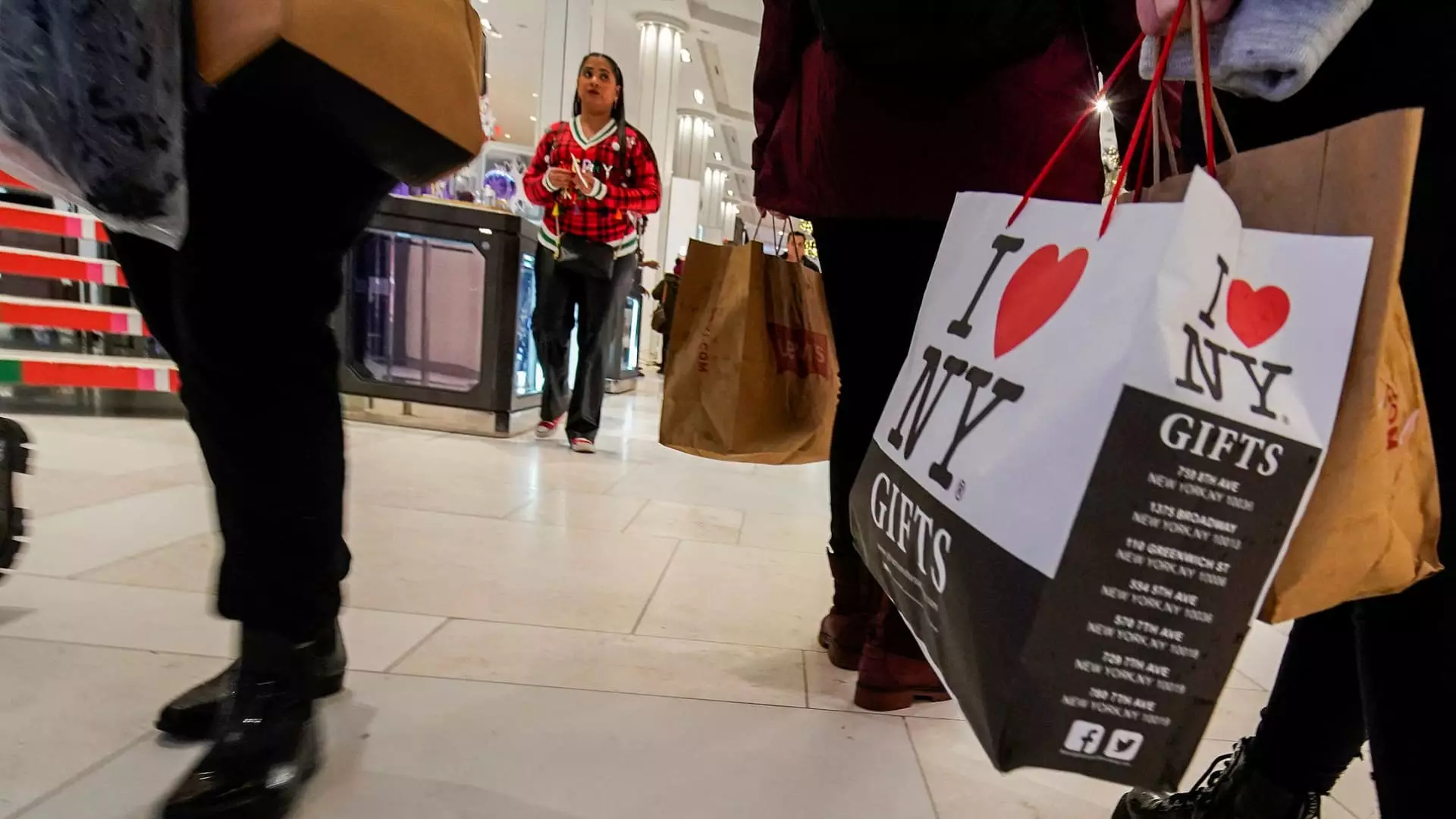As the holiday season approaches, Americans traditionally indulge in lavish spending, a tendency that is projected to escalate significantly this year. According to the National Retail Federation, holiday expenditures between November 1 and December 31 are anticipated to reach an unprecedented total ranging from $979.5 billion to $989 billion. This remarkable figure comes despite alarming data indicating that credit card debt has soared to over $1.14 trillion. Deloitte’s recent holiday retail survey suggests that consumers will spend an average of $1,778, marking an 8% increase from the previous year.
Nevertheless, this optimistic outlook on holiday spending belies a stark reality: many shoppers are grappling with the financial aftermath of last year’s celebrations. NerdWallet’s report reveals that 28% of consumers have yet to settle their debts from the prior holiday season. Essentially, holiday gift buying has transformed into an ongoing financial burden for many, morphing jubilant celebrations into potential economic traps.
The Credit Card Dilemma
As the holiday shopping frenzy kicks off, it is important to acknowledge how many consumers plan to finance their expenditures. An alarming 74% of respondents to a NerdWallet survey have indicated they intend to use credit cards for purchases, while 28% expect to dip into their savings. Additionally, 16% plan to utilize buy now, pay later (BNPL) schemes, a rapidly emerging financing option that warrants scrutiny.
This growing reliance on credit, particularly during high-spending periods, raises significant concerns regarding financial literacy and responsibility. Credit cards are notoriously burdensome with average interest rates exceeding 20%, which is near historic highs. While BNPL offerings might suggest simplicity and immediate gratification through installment payments, they are not without their pitfalls. Notably, the average consumer may underestimate the ramifications of accruing multiple BNPL loans, which can lead to financial chaos.
The Allure and Risks of Buy Now, Pay Later
The surge in popularity of BNPL services underscores a critical shift in consumer finance behavior. Forecasts by Adobe indicate that BNPL spending could surpass $993 million on Cyber Monday alone. While the option to break payments into manageable segments can be advantageous—especially when interest rates hover around 0%—many consumers fail to recognize that this method of payment merely rebrands credit access. Experts, such as certified public accountant Howard Dvorkin, underscore the inherent risks: “These are just another form of credit, disguised as something for free.”
With the potential for numerous accounts to open simultaneously, consumers expose themselves to cycles of overspending that could result in missed payments and deteriorating credit histories. For those who falter on their payment schedules, punitive fees or deferred interest can exacerbate financial woes, as some providers impose interest rates that can reach as high as 30%.
Ultimately, the holiday season should be a time of joy and celebration, not a precursor to financial distress. The current trends in consumer behavior, especially surrounding credit card usage and BNPL options, point to a collective need for greater financial education and awareness. If consumers fail to adopt more prudent spending practices, the festive spirit can quickly morph into a cycle of debt that lingers far beyond the holidays. As such, it’s critical for individuals to evaluate not just the immediate thrill of gift-giving but the lasting impact of their financial choices during this festive time.

